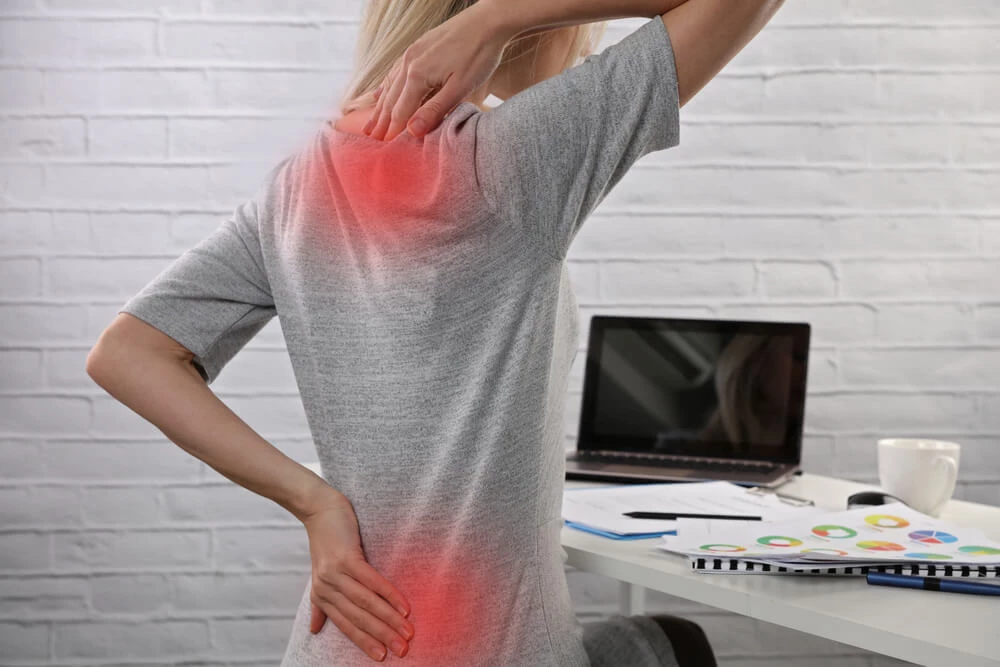Get The Answers in this Guide to Headache Treatments in Naperville, Ilinois.
If you’re one of the millions of people who deal with headaches on a regular basis, this guide is for you.
In it, we’ll discuss the different types of headaches and the various treatments available. We’ll also provide tips for how to reduce headache pain and improve your quality of life.
So whether you’re looking for information on Naperville headache treatment options or just want to learn more about headaches in general, this guide has you covered.
Don’t suffer from headaches any longer. Get the information and help you need to find relief today!
WHAT CAUSES HEADACHES?
There are many different things that can cause headaches. Some common causes include:
- Stress
- Tension
- Poor posture
- Eye strain
- Dehydration
- Hunger
- Caffeine withdrawal
- Sinus infections or allergies
- Cluster headaches (recurring headaches that last for weeks or months at a time)
- Migraines (severe headaches that can be accompanied by nausea, vomiting, and sensitivity to light and sound)
While some headaches can be managed with over-the-counter medications or lifestyle changes, others may require more aggressive treatment.
If you’re concerned about your headaches, speak to your doctor. They can help you determine the cause and find the best treatment for you.
What Are the Different Types of Headaches?
There are several distinct kinds of headaches, each with its own set of symptoms. The most common types of headaches are tension headaches and migraines.
Tension headaches are the most common type of headache. They’re often caused by stress, fatigue, or muscle tension.
Migraines are less common than tension headaches, but they’re more severe. Some people also experience an aura before a migraine begins. Auras are visual disturbances that can include flashes of light or blind spots. Migraine pain can be triggered by stress, certain foods, bright lights, and changes in sleep patterns.
There are other, less common types of headaches as well. These include:
Cluster headaches: Cluster headaches are severe and cause pain around one eye. Cluster headaches typically come and go in cycles.
Sinus headaches: Sinus headaches are caused by congestion and inflammation in the sinuses.
Caffeine withdrawal headaches: If you regularly drink caffeinated beverages and suddenly stop, you may experience a headache. Caffeine withdrawal headaches typically peak after one or two days and last for a few days.
Rebound headaches: Rebound headaches are caused by overusing headache medication. If you take pain relievers more than a few days a week, you may be at risk for rebound headaches.
What Are the Headache Symptoms?
The symptoms of a headache can vary depending on the type of headache you’re experiencing.
Tension headaches are often described as a dull, throbbing pain on both sides of the head. The pain is often mild to moderate.
Migraine headaches are more severe and can cause throbbing or pulsing pain, usually on one side of the head. Migraines are often accompanied by symptoms like nausea, vomiting, and sensitivity to light.
Cluster headaches are severe and cause pain around one eye. They’re often accompanied by a runny or congested nose.
Sinus headaches are caused by congestion and inflammation in the sinuses. They’re often accompanied by a runny nose and facial pain.
Caffeine withdrawal headaches typically peak after one or two days and last for a few days.
Rebound headaches are similar to those of tension headaches. The pain is often dull and throbbing, and it can be on both sides of the head.
CHIROPRACTIC HEADACHE TREATMENT
Do you suffer from headaches? If so, you’re not alone. Many people struggle with headache pain every day. In fact, headaches are the most common type of pain. But what causes them? And more importantly, how can you get relief?
Take another look at the “what causes headaches” topic. You’ll see that a variety of these ailments are connected to the spine. You might wish to consult with a chiropractor about Naperville headache treatment.
Your chiropractor will first explore your medical history and complete a physical exam. We’ll need to determine if a spine joint dysfunction caused your headache. We’ll review some of the causes of headaches with you as well.
We might also figure out what’s causing your headaches by looking at your current lifestyle and history. Poor posture and stress, for example, may be the source of many problems. An accident, such as a vehicle collision, might be to blame.
Your chiropractor can then develop a customized headache treatment plan. We could use a combination of treatments, including:
- Mobilization
- Exercise
- Massage
- Low-load craniocervical mobilization
- Spinal manipulation
In this research, spinal manipulation helped reduce headache pain. Your chiropractor will use their hands to apply a firm amount of pressure to a spinal joint. We’ll concentrate on the upper part of your spine if you have a cervicogenic headache.
Deep neck flexion exercises, on the other hand, might be beneficial. Otherwise, joint mobilization can assist you with your mobility while reducing discomfort.
Consider neuromuscular massages if you’re having migraine problems. These massages focus on the head, neck, back, and shoulder pressure points.
Low-load craniocervical mobilization might help with tension headaches. Tension in the head, neck, and shoulders is addressed. Moving and stretching cervical segments might assist to relieve the tension.
AT-HOME CARE
Now that you know what causes headaches, see your chiropractor about a few at-home therapies. Between chiropractic headache treatment in Naperville, you may utilize these care ideas.
Is a hot or cold towel better for headaches?
A hot compress will help soothe muscle tension that may contribute to headaches. Cold therapy can dull pain signals and reduce inflammation.
You might place a heating pad on your neck or forehead for fifteen to twenty minutes at a time. Or you could try using an ice pack wrapped in a thin cloth. Do what feels best for you.
Environmental Changes
Remember, changing your surroundings might be beneficial. Do you spend the day staring at a computer screen? Artificial light and displays may cause migraines.
Invest in an ergonomic workstation. Position your computer screen so you don’t have to strain your eyes or neck. Set up a screen filter to minimize glare. If possible, take a break from bright lights every few hours.
Also, consider switching to daylight spectrum fluorescent bulbs.
Relax
It’s possible to use relaxation methods as a headache medication. Consider learning yoga or meditation if you haven’t already. Progressive muscle relaxation techniques, such as massage and breathing exercises, can help relieve tension that causes headaches.
Consider scheduling regular massages or acupuncture appointments. Massages can relieve tension in your neck and shoulders. Acupuncture, on the other hand, stimulates points throughout the body to relieve tension.
Acupressure is like acupuncture but without needles. Use your fingers to apply pressure on points throughout the body linked to headaches.
Chiropractic Treatments
Now that you understand what causes headaches, you may want to seek professional care. Chiropractors are specially trained to diagnose and treat conditions that lead to pain.
Diet and Exercise
Don’t forget to drink plenty of water. Chronic dehydration can make you irritable and impair your concentration.
Consider your diet.
Cheese, coffee, and alcohol are three foods that might cause headaches. Nitrites and nitrates are two elements found in meats, vegetables, fruits, herbs, spices, and other plant-based products that can create allergies or infections.
Medications
Over-the-counter medicines can help you treat your headaches. The following are some of the over-the-counter medications that may be used to treat your headaches:
- Amitriptyline
- Valproic acid
- Lithium
- Topiramate
- Beta-blockers
- Verapamil
- Methysergide maleate
Consult your doctor before taking over-the-counter medicines.
Natural Remedies
Consider a natural treatment if you don’t want to use an over-the-counter medication. These are some of the options:
- Butterbur
- Feverfew
- Coenzyme Q10
- Vitamin B-12
- Magnesium
These plants and supplements might assist you in eliminating your headaches.
While some home remedies might help you get rid of your headaches, it’s best to see a qualified healthcare provider. A professional can diagnose the underlying cause of your headaches and help you find an effective treatment.
If you suffer from chronic headaches, it’s important to see a healthcare provider.
WHAT CAUSES HEADACHES: YOUR GUIDE TO EASING THE PAIN
Headaches are a common problem, and they can be caused by many different things. To cap it off, we’ve outlined some of the most common causes of headaches, as well as some tips on how to get relief.
Tension headaches are the most common type of headache, and they’re often caused by stress or muscle tension. If you have a tension headache, you may feel like your head is in a vise. The pain is usually mild to moderate, and it’s often relieved by over-the-counter painkillers such as ibuprofen or acetaminophen. If you have frequent tension headaches, your doctor may prescribe a muscle relaxant or antidepressant medication.
Migraine headaches are less common than tension headaches, but they’re more severe. Migraines often cause throbbing pain, and they can be accompanied by nausea, vomiting, and sensitivity to light. If you have a migraine, you may want to lie down in a dark room and sleep. Some people find relief by placing a cold pack on their foreheads. Over-the-counter painkillers can help, but they don’t always work.
Cluster headaches are another type of headache that’s less common than tension headaches or migraines. Cluster headaches are usually short but severe, and they often occur in clusters, hence the name. If you have a cluster headache, you may feel like there’s a burning or stabbing sensation on one side of your head. You may also have watering eyes and a runny nose on the same side as the pain.
There are many other types of headaches, and the best way to find relief is to see a doctor. If you have persistent or severe headaches, your doctor will likely order some tests to rule out any underlying medical conditions. Once a diagnosis is made, your doctor will work with you to find the best treatment plan.
Want to talk about your treatment options? We’re here to help.
Schedule an exam or consultation with our team today to get started.








